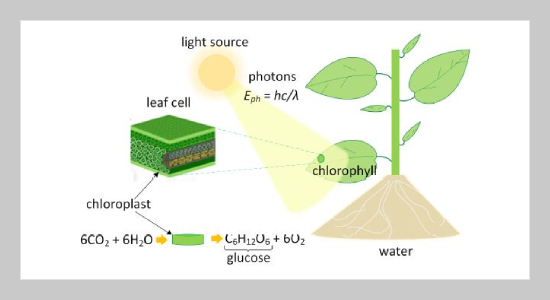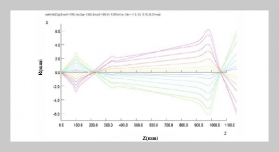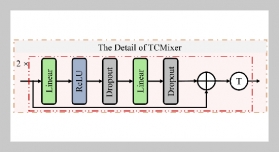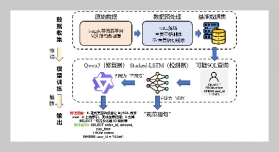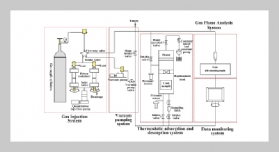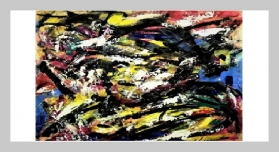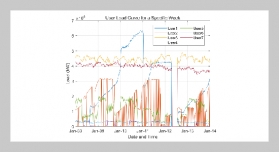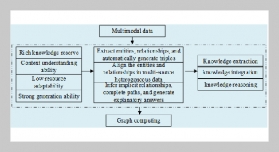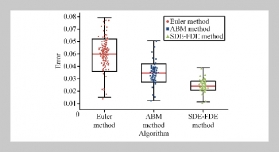REFERENCES
- [1] M. Mõttus, M. Sulev, F. Baret, R. Lopez-Lozano, and A. Reinart. “Photosynthetically active radiation: measurement and modeling”. In: Encyclopedia of sustainability science and technology. 2016, 7902–7931.
- [2] G. Ries, G. Buchholz, H. Frohnmeyer, and B. Hohn, (2000) “UV-damage-mediated induction of homologous recombination in Arabidopsis is dependent on photosynthetically active radiation" Proceedings of the National Academy of Sciences 97(24): 13425–13429. DOI: 10.1073/pnas.230251897.
- [3] X.-G. Zhu, S. P. Long, and D. R. Ort, (2008) “What is the maximum efficiency with which photosynthesis can convert solar energy into biomass?" Current Opinion in Biotechnology 19(2): 153–159. DOI: 10.1016/j.copbio.2008.02.004.
- [4] E. Guertal and C. Elkins, (1996) “Spatial variability of photosynthetically active radiation in a greenhouse" Journal of the American Society for Horticultural Science 121(2): 321–325. DOI: 10.21273/jashs.121.2.321.
- [5] A. Ridgwell, J. S. Singarayer, A. M. Hetherington, and P. J. Valdes, (2009) “Tackling regional climate change by leaf albedo bio-geoengineering" Current Biology 19(2): 146–150. DOI: 10.1016/j.cub.2008.12.025.
- [6] K. Inada, (1976) “Action spectra for photosynthesis in higher plants" Plant and Cell Physiology 17(2): 355–365.
- [7] K. J. McCree, (1971) “The action spectrum, absorptance and quantum yield of photosynthesis in crop plants" Agricultural Meteorology 9: 191–216. DOI: 10.1016/0002-1571(71)90022-7.
- [8] C. Barnes, T. Tibbitts, J. Sager, G. Deitzer, D. Bubenheim, G. Koerner, and B. Bugbee, (1993) “Accuracy of quantum sensors measuring yield photon flux and photosynthetic photon flux" Horticultural Science 28(12): 1197–1200. DOI: 10.21273/hortsci.28.12.1197.
- [9] F. Brooks, (1964) “Agricultural needs for special and extensive observations of solar radiation" The Botanical Review 30(2): 263–291. DOI: 10.1007/BF02858604.
- [10] I. Al-Helal and A. Abdel-Ghany, (2011) “Measuring and evaluating solar radiative properties of plastic shading nets" Solar Energy Materials and Solar Cells 95(2): 677–683. DOI: 10.1016/j.solmat.2010.09.039.
- [11] S. Castellano, G. Russo, and G. S. Mugnozza. “The influence of construction parameters on radiometric performances of agricultural nets”. In: III International Symposium on Models for Plant Growth, Environmental Control and Farm Management in Protected Cultivation 718. 2006, 283–290. DOI: 10.17660/ActaHortic. 2006.718.32.
- [12] Growace. Why is PAR rating a big deal for indoor grow light systems? 2021.
- [13] S. Zhen and B. Bugbee, (2020) “Far-red photons have equivalent efficiency to traditional photosynthetic photons: Implications for redefining photosynthetically active radiation" Plant, cell & Environment 43(5): 1259–1272. DOI: 10.1111/pce.13730.
- [14] S. Zhen, M. van Iersel, and B. Bugbee, (2021) “Why far-red photons should be included in the definition of photosynthetic photons and the measurement of horticultural fixture efficacy" Frontiers in Plant Science 12: 1158.
- [15] V. Mascoli, L. Bersanini, and R. Croce, (2020) “Far-red absorption and light-use efficiency trade-offs in chlorophyll of photosynthesis" Nature Plants 6(8): 1044–1053. DOI: 10.1038/s41477-020-0718-z.
- [16] H. McPherson, (1969) “Photocell-filter combinations for measuring photosynthetically active radiation" Agricultural Meteorology 6(5): 347–356. DOI: 10.1016/0002-1571(69)90026-0.
- [17] W. Biggs, A. Edison, J. D. Eastin, K. Brown, J. Maranville, and M. Clegg, (1971) “Photosynthesis light sensor and meter" Ecology 52(1): 125–131.
- [18] Y. Mizoguchi, Y. Ohtani, T. Aoshima, A. Hirakata, S. Yuta, S. Takanashi, H. Iwata, and Y. Nakai, (2010) “Comparison of the characteristics of five quantum sensors." Bulletin of the Forestry and Forest Products Research Institute (416): 113–120.
- [19] LI-COR. LI-190R and LI-191R Quantum Sensors. 2021.
- [20] A. Instruments. SQ-512-SS: amplified 0-2.5 V fullspectrum quantum sensor. 2021.
- [21] Kipp and Zonen. PQS1 PAR quantum sensor. 2021.
- [22] H. Instruments. QSRED quantum sensor. 2021.
- [23] UPRtek. Spectral PAR meter. 2021.
- [24] S. System. Sun System PAR meter with remote sensor. 2021.
- [25] E. Instruments. ML-020P PAR Sensor. 2021.
- [26] Prede. Quantum Sensors. 2021.
- [27] I. Sensor. Photosynthetically active radiation sensor type 5.5. 2021.
- [28] C. Scientific. Quantum (PAR) sensor. 2021.
- [29] J. Rajendran, W. D. Leon-Salas, X. Fan, Y. Zhang, M. A. Vizcardo, and M. Postigo. “On the development of a low-cost Photosynthetically Active Radiation (PAR) sensor”. In: 2020 IEEE International Symposium on Circuits and Systems (ISCAS). IEEE. 2020, 1–5.
- [30] R. Muchow and G. Kerven, (1977) “A low-cost instrument for measurement of photosynthetically active radiation in field canopies" Agricultural Meteorology 18(3): 187–195. DOI: 10.1016/0002-1571(77)90036-X.
- [31] J.-Y. Pontailler, (1990) “A cheap quantum sensor using a gallium arsenide photodiode" Functional Ecology: 591–596.
- [32] C. Federer and C. Tanner, (1966) “Sensors for measuring light available for photosynthesis" Ecology 47(4): 654–657.
- [33] V. P. Gutschick, M. H. Barron, D. A. Waechter, and M. A. Wolf, (1985) “Portable monitor for solar radiation that accumulates irradiance histograms for 32 leafmounted sensors" Agricultural and Forest Meteorology 33(4): 281–290. DOI: 10.1016/0168-1923(85)90028-0.
- [34] J. M. Aaslyng, E. Rosenqvist, and K. Høgh-Schmidt, (1999) “A sensor for microclimatic measurement of photosynthetically active radiation in a plant canopy" Agricultural and Forest Meteorology 96(4): 189–197. DOI: 10.1016/s0168-1923(99)00057-x.
- [35] M. Uysal, C. Capsoni, Z. Ghassemlooy, A. Boucouvalas, and E. Udvary, (2016) “Optical wireless communications" Switzerland: springer: 107–122.
- [36] C. Federer and C. Tanner, (1966) “Sensors for measuring light available for photosynthesis" Ecology 47(4): 654–657.
- [37] LI-COR. LI-190R and LI-191R quantum sensors. 2021.
- [38] T. Instruments. OPAx387 Ultra-High Precision, Zero-Drift, Low-Input-Bias-Current Op Amps. 2021.
- [39] LI-COR. Principles of Radiation Measurement. 2021.
- [40] J. Ross and M. Sulev, (2000) “Sources of errors in measurements of PAR" Agricultural and Forest Meteorology 100(2-3): 103–125. DOI: 10.1016/S0168-1923(99) 00144-6.
- [41] J. Michalsky, L. Harrison, andW. Berkheiser III, (1995) “Cosine response characteristics of some radiometric and photometric sensors" Solar Energy 54(6): 397–402. DOI:10.1016/0038-092X(95)00017-L.
- [42] I. Alados, I. Foyo-Moreno, and L. Alados-Arboledas, (1996) “Photosynthetically active radiation: measurements and modelling" Agricultural and Forest Meteorology 78(1-2): 121–131. DOI: 10.1016/0168-1923(95) 02245-7.
- [43] L. O. Björn. “Principles and nomenclature for the quantification of light”. In: Photobiology. Springer, 2015, 21–25. DOI: 10.1007/978-1-4939-1468-5_2.
- [44] LI-COR. LI-193 spherical underwater quantum sensor. 2021.
- [45] LI-COR. Light measurement. 2021.
- [46] LI-COR. LI-191R line quantum sensor. 2021.
- [47] K. McCree, (1966) “A solarimeter for measuring photosynthetically active radiation" Agricultural Meteorology 3(5-6): 353–366. DOI: 10.1016/0002-1571(66) 90017-3.
- [48] A. Ångström and A. Drummond, (1961) “Basic concepts concerning cutoff glass filters used in diation measurements" Journal of the Atmospheric Sciences 18(3): 360–367.
- [49] A. Parisi, J. Wong, and C. Randall, (1998) “Simultaneous assessment of photosynthetically active and ultraviolet solar radiation" Agricultural and Forest Meteorology 92(2): 97–103. DOI: 10.1016/S0168-1923(98)00094-X.
- [50] L. Palva, E. Garam, S. Palmroth, R. Sepponen, and P. Hari, (1998) “Utilizing a multipoint measuring system of photosynthetically active radiation in photosynthetic studies within canopies" Silva Fennica 32: 311–319.
- [51] A. Kutschera and J. J. Lamb, (2018) “Light meter for measuring photosynthetically active radiation" American Journal of Plant Sciences 9(12): 2420.
- [52] U. Barı¸s and V. Demir, (2012) “Feasibility of Photosynthetically Active Radiation (PAR) Measurement Using LED and Photodiode" Journal of Agricultural Sciences 18(3): 214–225. DOI: 10.1501/tarimbil_0000001209.
- [53] W. D. Leon-Salas, J. Rajendran, M. A. Vizcardo, and M. Postigo-Malaga. “Measuring Photosynthetically Active Radiation with a multi-channel integrated spectral sensor”. In: 2021 IEEE International Symposium on Circuits and Systems (ISCAS). IEEE. 2021, 1–5. DOI: 10.1109/ISCAS51556.2021.9401321.
- [54] J. S. B. Valencia, S. Navarro, N. Giraldo, and L. Atehortua, (2014) “Estimation of Photosynthetically Active Radiation (PAR) using a low cost spectrometer" IEEE Latin America Transactions 12(2): 107–111.
- [55] Migro. Cheap PAR meter hack – Use a Lux meter to measure PAR accurately. 2021.
- [56] H. P. Adamson and I. T. Kruglak. Adaptive Photosynthetically Active Radiation (PAR) sensor with daylight integral (DLI) control system incorporating lumen maintenance. US Patent Application US2019/0320590A1.2019.
- [57] D.Wang. Systems and methods for improving a spectral response curve of a photo sensor. US Patent 10,217,779 B2. 2019.
- [58] Bickel, W. C, Richardson, and J. E. Sunlight measuring device. 2007.
- [59] Webbeking, Victor, Main, Karen, Kepferle, Loyd,Wilson, and L.Wendell. Instrument and method to measure available light energy for photosynthesis. 2007.
- [60] Gutschick, V. P, Barron, M. H,Waechter, D. A,Wolf, and M. A. Method and apparatus for measuring solar radiation in a vegetative canopy. 1987.
- [61] J. Norman, C. Tanner, and G. Thurtell, (1969) “Photosynthetic light sensor for measurements in plant canopies" Agronomy Journal 61(6): 840–843.
- [62] H. R. Barnard, M. C. Findley, and J. Csavina, (2014) “PARduino: a simple and inexpensive device for logging photosynthetically active radiation" Tree Physiology 34(6): 640–645. DOI: 10.1093/treephys/tpu044.
- [63] D. Yadav, M. Sumesh, T. Beno, S. Karanth, and G. Sadashivappa, (2018) “Design of Photosynthetically Active Radiation sensor" Examines in Physical Medicine and Rehabilitation 1(5):
- [64] F. Woodward and M. Yaqub, (1979) “Integrator and sensors for measuring photosynthetically active radiation and temperature in the field" Journal of Applied Ecology:545–552.
- [65] M. A. Martínez, J. M. Andújar, and J. M. Enrique, (2009) “A new and inexpensive pyranometer for the visible spectral range" Sensors 9(6): 4615–4634. DOI: 10.3390/s90604615.
- [66] M. Caya, J. Alcantara, J. Carlos, and S. Cereno. “Photosynthetically active radiation (PAR) sensor using an array of light sensors with the integration of data logging for agricultural application”. In: 2018 3rd International Conference on Computer and Communication Systems (ICCCS). IEEE. 2018, 377–381. DOI: 10.1109/CCOMS.2018.8463321.
- [67] M. A. Martínez, J. M. Andújar, and J. M. Enrique, (2009) “A new and inexpensive pyranometer for the visible spectral range" Sensors 9(6): 4615–4634. DOI: 10.3390/s90604615.
- [68] J. A. Duffie, W. A. Beckman, and N. Blair. Solar engineering of thermal processes, photovoltaics and wind. John Wiley & Sons, 2020.
- [69] A. García-Rodríguez, D. Granados-López, S. García-Rodríguez, M. Díez-Mediavilla, and C. Alonso-Tristán, (2021) “Modelling Photosynthetic Active Radiation (PAR) through meteorological indices under all sky conditions" Agricultural and Forest Meteorology 310: 108627. DOI: 10.1016/j.agrformet.2021.108627.
- [70] M. G. Brown, S. Skakun, T. He, and S. Liang, (2020) “Intercomparison of machine-learning methods for estimating surface shortwave and Photosynthetically Active Radiation" Remote Sensing 12(3): 372. DOI: 10.3390/rs12030372.
- [71] E. Habyarimana and F. S. Baloch, (2021) “Machine learning models based on remote and proximal sensing as potential methods for in-season biomass yields prediction in commercial sorghum fields" PloS One 16(3): e0249136. DOI: 10.1371/journal.pone.0249136.


